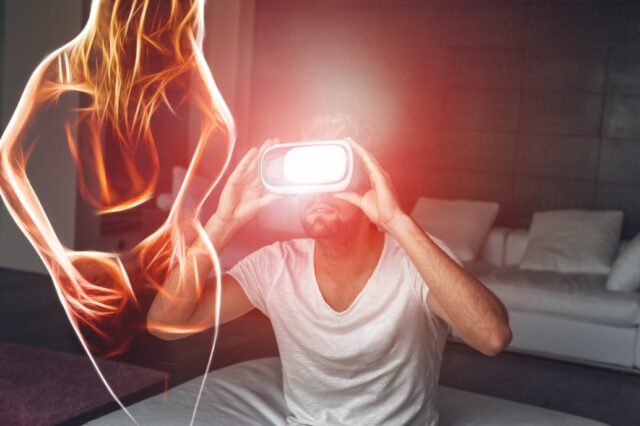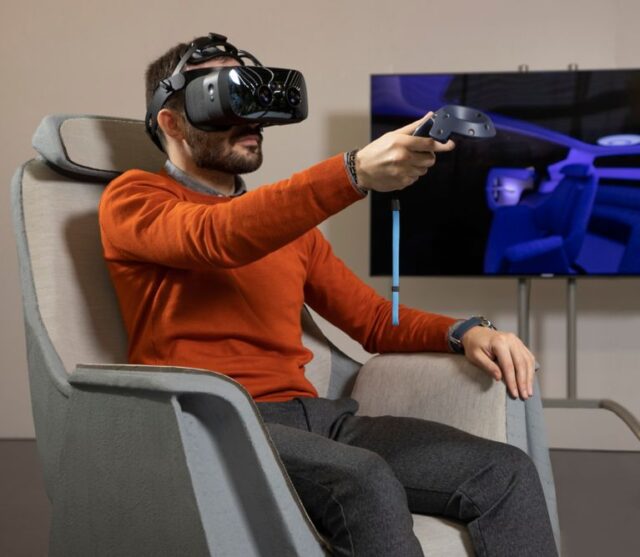
Humanity and civilization are evolving constantly. Numerous things happen practically every single decade. That’s why people need to adapt to new circumstances pretty fast. One way to look at how humanity has changed in the last century is to pay attention to our technology. For most of human history, machines have enabled us to control the world around us. Seismic shifts in technology have always brought about significant changes.
For example, the industrial revolution allowed populations to explode, especially in big cities. Similarly, the computer revolution connected the world like never before, and the internet is a fundamental aspect of modern life. We cannot do anything much without the use of the internet. Just think about it, it has made it possible for us to communicate with people from all over the globe. Not only that, it is possible to work on numerous projects with teams from other countries.
Now, virtual reality seems poised to become the “next big thing.” Sure, we could see this concept emerge back in the eighties. Just think about all the Hollywood movies where this concept was introduced to the public. Many believed it will never happen. But, it happened. But is that the case, or is this just another fad? Will companies like Meta and programs like the SexLikeReal revolutionize the way we interact with each other? Let’s dive in and find out.
What are the Potential Uses of Virtual Reality?

One way to tell whether a new technology will become a game-changer is if it can enhance our current methods of doing things. Some would say that this happens with all technologies. However, this about numerous methods that ceased to exist only a couple of months after they have been introduced to the public. Fortunately, VR has some incredible potential, such as:
1. Interactive Education
Imagine experiencing historical events as they happened in real-time. Without any doubt, that would be a great sight to see. What if you could view an extinct species up close and personal and see what it looked like when it was alive? What if you could walk next to dinosaurs or explore the bottom of the ocean? These scenarios would make learning far more interesting, and it’s all within reach. Naturally, creating this sort of content is nothing short of challenging, but mastering this technology has made it possible for us to do so.
2. Video Gaming
Gamers love to explore immersive environments, and the more realistic the experience, the better the game. Being in a position to have a much more vivid experience of the environment the game offers you is something that will attract more people to become gamers, don’t you think? While there are still some significant hurdles to overcome (more on those), gaming is ready to embrace VR and all it has to offer. We are sure this will occur down the road in a foreseeable future.
3. Adult Content

Porn sites have been pushing VR technology because it allows users to get a much better and more immersive sexual experience. Rather than risking one’s health and safety in real life, one can explore their kinks in a safe, controlled environment. We are sure that this technology will do exactly that.
4. Healthcare
Doctors and surgeons can explore a patient’s body in VR to determine what’s wrong. Someday, surgeons may even be able to operate in a virtual environment while robots do the actual cutting and sewing. With this in mind, it is possible to avoid all the drastic methods that make people hesitant about the things such as these. Therefore, it is possible to make the procedure much more straightforward.
5. Engineering
Engineers don’t have to rely on sketches and mock-ups to develop their designs. Now, they can create 3D-rendered images and get a sense of their project without investing money into any physical materials. It is possible to change these blueprints as much as you want until the perfect recipe has been found. Surely, we would describe this as a positive step forward in this regard.
What Problems are Holding VR Technology Back?

While virtual reality is far more mainstream today than in decades past, it’s still facing some intense obstacles. Unless these issues can be addressed and corrected, VR will likely avoid center stage and be mostly relegated to the sidelines of modern technology. The most pressing issues that VR encounters include:
6. Motion Sickness
The human brain is not ready to process expertly-rendered digital environments. Because there’s such a disconnect between what you’re seeing and what your body is doing, it’s easy to get nauseous. This problem seems to affect women more than men, but it’s a significant hurdle to overcome.
7. High Upfront Costs
Fortunately, as technology advances, headsets will get cheaper. However, for the best VR experience, users must invest in various peripherals like headphones, haptic feedback gloves, and more. With headsets costing at least $300, most people can’t afford to get into VR.
8. Physical Limitations
While VR environments can be as immersive and creative as anyone can imagine, users won’t be able to explore them without some additional tools or equipment. In most cases, users have to create a safe space to practice VR, lest they injure themselves or damage their property.
What Does a VR-Centric Future Look Like?

Currently, most industries are trying to figure out how to utilize VR. For now, only two sectors can embrace this technology already and will get the most use out of it. These industries include video games and adult content. We’re already seeing these areas thrive and offer immersive sexual entertainment.
It’s easy to see why these elements were the first to use virtual reality, as users can accept VR for these situations. However, so many industries and businesses can benefit from VR technology that it’s hard to imagine one that wouldn’t be affected. One example might be food service because it’s hard to enjoy a virtual meal instead of a real one.
Realistically, VR will settle into a few specific niches and likely remain there. We don’t envision Hollywood movies using VR for most new releases, and many industries aren’t enhanced that much by introducing new headsets. Overall, we believe that VR tech will continue to push the envelope and show consumers what’s possible. Here, we’ve provided you with some relevant points about the potential of virtual reality. We are sure this will become the thing of the future.







